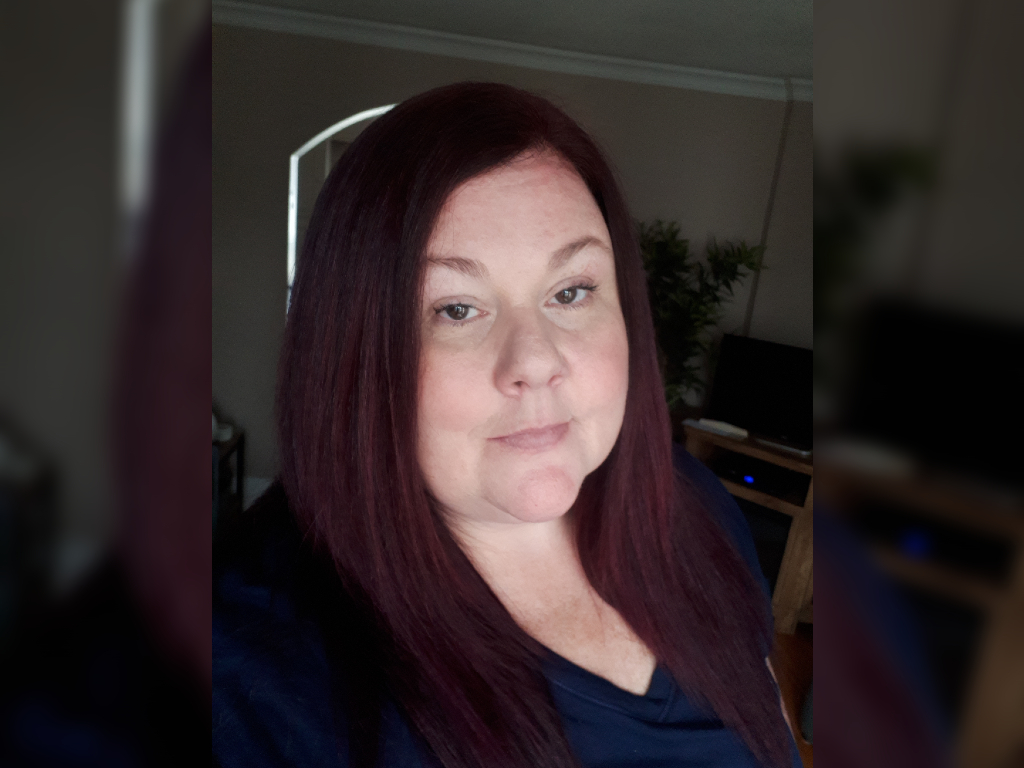Editor’s note: All interview subjects self-identify as fat. The terms “larger-bodied” and “customer of size” are used when discussing airline policies and the general population.

When the seatbelt sign comes on during a flight, passengers know to buckle up. But for larger-bodied travellers, it’s not always so simple.
Jennifer Germyn, 34, flies regularly for work, and the length of the standard aircraft seatbelt and narrow seats often leave her bruised and in pain.
“Most of the time, I guiltily tuck the connector under my shirt and pretend it fits, knowing that it puts me in danger,” the B.C. native said. “I get dark purple bruises on my hipbones from the armrests every time.”
Embarrassment keeps Germyn from asking for a seatbelt extension.
“It hurts like hell.”
Travelling for Germyn isn’t just for pleasure: her livelihood as a software developer depends on it. This means she has to choose between keeping her job and undergoing physical pain and extreme anxiety to fly.
“I just shut up and bear it because this is the way I normally move through life,” she said.
This is a reality for many larger-bodied people when it comes to travel. Advocates argue that airline policies are discriminatory and need to better accommodate diverse body sizes.
While some airlines attempt to address these needs, there are still many barriers that make travelling for large-bodied people difficult, stress-inducing and downright painful.
The average size is increasing — and airplane seats are shrinking
The average size of an airplane seat started to shrink in the 1980s, and economy seats are now often around 17 inches wide. The amount of legroom on aircraft has also decreased.

This poses a problem for many travellers, as the average American man’s waist size has increased from 37.5 to 40 inches in the last two decades, and the average woman’s waist size has increased to 38 inches from 35, according to a 2016 study conducted by the U.S. Centers for Disease Control and Prevention.
In Canada, experts say body sizes of men and women have also increased since the ’70s.
Gabor Lukacs, founder and co-ordinator of Air Passenger Rights, says shrinking seat sizes are a safety concern but airlines want to make money.
“The more passengers or seat rows an airline can fit in the same aircraft, the more profit it can make,” Lukacs said.
Canadian airlines’ ‘one person, one fare’ policy
Shrinking seat sizes have a direct effect on many customers. Plenty of airlines still require larger-bodied passengers to buy an extra seat — something flyers have been doing for years.
But in 2008, the Canadian Transportation Agency (CTA) passed the “one person, one fare” (1p1f) policy, which prohibited Air Canada, Air Canada Jazz and WestJet from charging flyers that need an extra seat more than one fare.
This rule only applies, however, for domestic flights, meaning people flying outside of Canada may have to pay for an extra seat.
For someone to qualify for an extra seat, an airline must determine whether they meet the criteria of being “functionally disabled by obesity,” the CTA said in a statement to Global News.
A larger-bodied passenger is considered “functionally disabled” when an airline determines they cannot safely fit in the seat, the CTA said.
Whether a domestic traveller is allowed an extra seat is not always guaranteed, which means some flyers may buy an extra seat just to be safe.

Get daily National news
For Air Canada passengers, the airline’s policy requires those who request an extra seat to have their bottom measured from hip to hip by their physician. The physician must confirm through a medical form that both armrests cannot be put down when seated and that the passenger physically requires the additional space.
In a statement to Global News, Air Canada said an extra seat is free of charge for domestic travel if passengers fill out the appropriate forms in advance of their trip.
“If a seatbelt extender is required this will be provided, however (and this is very important) we must be notified in advance of the flight (at least 48 hours) so we can be sure the equipment is available,” an Air Canada spokesperson said.
The CTA added that the Accessible Transportation for Persons with Disabilities Regulations, which come into effect in June of this year, will extend the 1p1f policy to all large Canadian airlines as well as Via Rail, Greyhound and major ferry operators.
Accessible for one, accessible for all
Larger-bodied flyers say some airlines have more inclusive policies than others.
Southwest Airlines has been touted as one of the most progressive in the realm of fat travel ever since the airline was criticized for escorting director Kevin Smith off a flight in 2010 for his size.

After the incident, the company introduced a “customer of size” policy, which states that any flyer who would “encroach upon any part of the neighbouring seat” can purchase an additional seat, the cost of which may be refunded by the airline.
“Customers of size who prefer not to purchase an additional seat in advance have the option of purchasing just one seat and then discussing their seating needs with the Customer Service Agent at their departure gate,” the airline says on its website.
“If it is determined that a second (or third) seat is needed, they will be accommodated with a complimentary additional seat.”
For Juno Award-winning musician G.R. Gritt, Southwest Airlines is always their airline of choice for this policy alone.
Unfortunately, it’s not always an option when flying within Canada.
If Gritt, who travels often for work, has to fly with an airline that doesn’t have an extra seat policy, they might have to turn down opportunities. If the cost of two seats is more than the payment for a gig, it’s often not financially feasible for them.
Gritt and their manager, Krystal Thompson, say they faced a stressful situation when flying out of Whitehorse, Yukon, with Air Canada earlier this month.
Unlike Southwest Airlines, Air Canada’s current policy requires larger-bodied flyers to get a doctor’s note in order to get a complimentary extra seat in advance of the trip.
Neither Gritt nor Thompson had asked their doctor for documentation for the 1p1f policy “for the fear of further discrimination as opposed to accommodation,” Thompson said.

While they couldn’t be given extra room using Air Canada’s policy on their Whitehorse flight, Thompson and Gritt attempted to upgrade their seats days in advance and were ready to pay extra. They said they weren’t able to get the upgrade.
“We mentally prepare to be physically in pain, too.”
Diana Frivalt, 46, said she’s almost always granted an extra seat free of charge from Air Canada when travelling domestically.
Though she has the required doctor’s note and documentation to be eligible for the airline’s 1p1f policy, it isn’t the most comfortable process.
In December, Frivalt said she was travelling on United Airlines with friends from Toronto to Los Angeles to Puerto Vallarta, Mexico. Frivalt says she paid $1,000 for an additional seat.
When Frivalt approached the counter for her second boarding pass, she says she was advised the gate agent would be able to print it.
However, upon arrival in L.A. for her connecting flight, she says the gate agent refused to print her extra boarding pass. The additional seat she had purchased didn’t even have adjustable armrests, she said, defeating the purpose of buying the extra seat.

“After having a complete breakdown … and being consoled by a random stranger, the agent finally moved my seat and provided the additional boarding pass,” she said.
In a statement to Global News, the airline said: “We strive to provide an enjoyable experience for our customers and to make adjustments when possible to make all passengers feel comfortable, including providing seatbelt extenders when needed.”
United Airlines requires any passenger who can’t fit safely and comfortably in a single seat to purchase an additional seat for each leg of their trip. The price of the second seat is only guaranteed to be the same as the first if purchased at the same time.
Furthermore, a customer may be required to pay for a second seat up front on the day of travel if they don’t do so in advance.
While the problems she encountered are certainly an issue for larger-bodied flyers, Frivalt said, it poses significant barriers for all passengers who require extra aid.
“They need to standardize their check-in process for people requiring additional seats,” she said. “Everybody, including fat bodies, have a right to be treated with dignity and respect.”
Larger-bodied travellers say negative experiences are common.
Thompson and Gritt say not only can airlines be discriminatory but other passengers can, too. Almost every time they travel, they say they get dirty looks or witness flyers attempting to switch seats using the airline’s app or by speaking to an on-board steward.
What needs to change?
Airlines need to better accommodate larger-bodied flyers, Lukacs said. Customers of size requiring an extra seat should be treated the same way as any flyer needing extra aid, from crutches and wheelchairs to service dogs or personal support workers.
“These aids are needed for them to be able to travel the same way that able-bodied passengers are,” Lukacs said.
If all bodies and needs are adequately accommodated, Gritt said, flying will be an easier mode of transportation for all people — including those with larger bodies.
“If you make travel accessible for the most marginalized person, you make it accessible for everyone.”












Comments